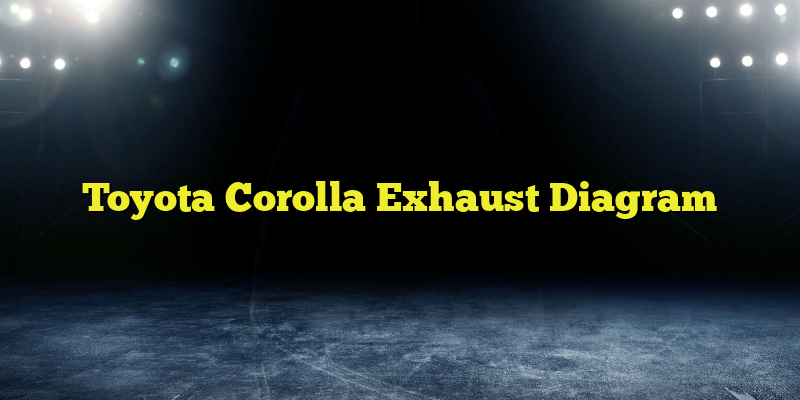Introduction
The Toyota Corolla is a popular vehicle known for its reliability and efficiency. One important component of the Corolla’s engine system is the exhaust system. The exhaust system plays a crucial role in maintaining the performance of the vehicle and reducing harmful emissions. In this article, we will discuss the Toyota Corolla exhaust system and provide a detailed diagram to help you understand its components.
Exhaust System Components
The exhaust system of a Toyota Corolla consists of several components that work together to ensure proper exhaust flow and emission control. These components include:
1. Exhaust Manifold: The exhaust manifold collects the exhaust gases from the engine’s cylinders and directs them into the exhaust system.
2. Catalytic Converter: The catalytic converter is responsible for reducing harmful emissions by converting toxic gases into less harmful substances through a chemical reaction.
3. Oxygen Sensor: The oxygen sensor monitors the oxygen levels in the exhaust gases and provides feedback to the engine control unit (ECU) for optimal fuel-air mixture.
4. Exhaust Pipes: The exhaust pipes carry the exhaust gases from the engine to the muffler. They are usually made of stainless steel to withstand high temperatures and corrosion.
5. Muffler: The muffler reduces the noise produced by the exhaust gases and also helps with exhaust flow restriction.
6. Exhaust Tips: The exhaust tips are the visible part of the exhaust system, usually made of chrome or stainless steel. They add a stylish touch to the vehicle’s appearance.
Exhaust System Diagram
Here is a diagram illustrating the layout of the exhaust system components in a Toyota Corolla:

1. Exhaust Manifold: Connected to the engine’s cylinders, the exhaust manifold collects the exhaust gases.
2. Catalytic Converter: Located between the exhaust manifold and the muffler, the catalytic converter converts harmful gases into less harmful ones.
3. Oxygen Sensor: The oxygen sensor is positioned in the exhaust system and measures the oxygen levels in the exhaust gases.
4. Exhaust Pipes: The exhaust pipes carry the exhaust gases from the engine to the muffler.
5. Muffler: The muffler reduces the noise produced by the exhaust gases.
6. Exhaust Tips: The exhaust tips are the visible part of the exhaust system, adding a stylish touch to the vehicle’s appearance.
Frequently Asked Questions
What are the signs of a faulty exhaust system?
Some common signs of a faulty exhaust system include loud noises, decreased fuel efficiency, a strong smell of exhaust fumes, and visible damage or rust on the exhaust components. It is important to have any issues with the exhaust system addressed promptly to ensure optimal vehicle performance and reduce harmful emissions.
How often should I replace my Toyota Corolla’s exhaust system?
The lifespan of an exhaust system can vary depending on various factors such as driving conditions, maintenance, and the quality of the components. However, as a general guideline, it is recommended to have the exhaust system inspected regularly and replaced if any significant issues are found. A well-maintained exhaust system can last for several years.
In conclusion, the exhaust system of a Toyota Corolla is a crucial component that ensures proper exhaust flow and emission control. Understanding the different components and their functions can help you identify any issues and maintain the performance of your vehicle. Regular maintenance and timely repairs are important for a healthy exhaust system. If you have any further questions or need assistance, feel free to contact our official hotline or use the web-form provided.










